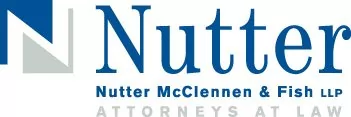There may come a time in the life cycle of a borrower when there is a covenant default, the borrower is on the ropes and the lender is being asked to continue to advance funds under the working capital line while the borrower tries to accomplish a turnaround. The purpose of this Tip is not to discourage a prudent lender from working with a borrower, but to put everyone on notice that a lender's decision to continue to support a borrower after it flounders in its turnaround effort may come under review by the bankruptcy court.
In the case of Official Committee of Unsecured Creditors v. R.F. Lafferty & Co., Inc.; * Cogen Sklar, LLP 267 F.3d 340; (3rd Cir 2001), the United States Court of Appeals held that certain outside advisers to the debtor induced the debtor to issue additional debt at a time that it was insolvent, causing the debtor to deepen its insolvency, ultimately leading to bankruptcy. The decision confirmed the lower court's ruling that the unsecured creditors were entitled to damage awards against some but not all of the advisers. Until this decision, damages were generally not awarded to creditors against third parties advising the debtor during its pre-bankruptcy struggle unless a fraud was involved.
In this case, the Third Circuit accepted the legal theory that there was a separate cause of action arising from the actions of a third party adviser, called "deepening insolvency." Under Lafferty, if a lender continued to lend to a debtor and the debtor's financial condition got worse then the lender might be liable under a separate cause of action for "deepening insolvency," even if there was no demonstration of fraud or negligence on the part of the lender.
The most interesting part of the decision is that the court did not rely on any bankruptcy theory or "federal common law," but rather found that the cause of action arose under Commonwealth of Pennsylvania corporate law. Unfortunately, no Pennsylvania case law supported this conclusion. Therefore, to uphold Lafferty in any other state would require that the state or federal court interpret the specific corporate law of the state.
In the intervening six years a number of courts have looked at the Lafferty decision and whether under the applicable state law there was a separate cause of action for "deepening insolvency." Some courts have treated "deepening insolvency" just as a measure of the damages caused by the fraud or negligence of third parties, including lenders.
The Third Circuit had an opportunity last year to revisit the entire issue of "deepening insolvency" in In re: CitX Corporation, Inc., Debtor, Gary Seitz, Chapter 7 Trustee for CitX Corporation, Inc. v. Detweiler, Hershey and Associates, PC; Robert Schoen, CPA, 448 F.3d 672 (3rd Cir 2006). This time the court was asked to review a Delaware Chancery Court case, in which the Delaware Court denied the existence under Delaware corporate law of a separate cause of action for "deepening insolvency." The Third Circuit reconsidered its opinion in Lafferty and decided that "deepening insolvency" was not a separate cause of action, but rather could be used as a measure of damages. The court also decided that the use of this measure of damages was limited to circumstances in which there was a fraud committed by the party charged (in this case the accountant), which caused the "deepening insolvency."
The Third Circuit's decision in CitX, based as it was on a Delaware Chancery Court decision, seemed to end the debate over "deepening insolvency." The use of "deepening insolvency" took an interesting twist, however, in the case of In re Greater Southeast Community Hospital Corp., I, et al., Debtors, Sam J. Albertus, Trustee for the DCHC Liquidating Trust v. Paul Tuft, et al., 353 B.R. 324 (D.C. Bankr. Ct. 2006). In this case, the bankruptcy court reconsidered a decision that it had reached relying on Lafferty, which found liability for certain attorneys and advisers to the debtor due to "deepening insolvency." The court agreed with the Third Circuit that "deepening insolvency" is really a measure of damages and not a separate cause of action. However, in Greater Southeast Community, the bankruptcy court determined that mere negligence by the outside third party adviser (and not only fraud) could also be a basis for using "deepening insolvency" as a measure of damages.
Conclusion: Fortunately, "deepening insolvency" as a separate cause of action appears to be discredited by the Delaware Chancery Court and the Third Circuit Court of appeals. However, the limitation placed by the Third Circuit on using it as a measure of damages only in the case of "fraud" continues to be an unsettled question. Having to prove mere negligence will make it easier to question the behavior of a lender prior to a borrower filing bankruptcy. Since most states other than Delaware have not decided this issue, it may be up to the federal courts to decide the right application of "deepening insolvency" under the state law of each debtor.
This update is for information purposes only and should not be construed as legal advice on any specific facts or circumstances. Under the rules of the Supreme Judicial Court of Massachusetts, this material may be considered as advertising.

